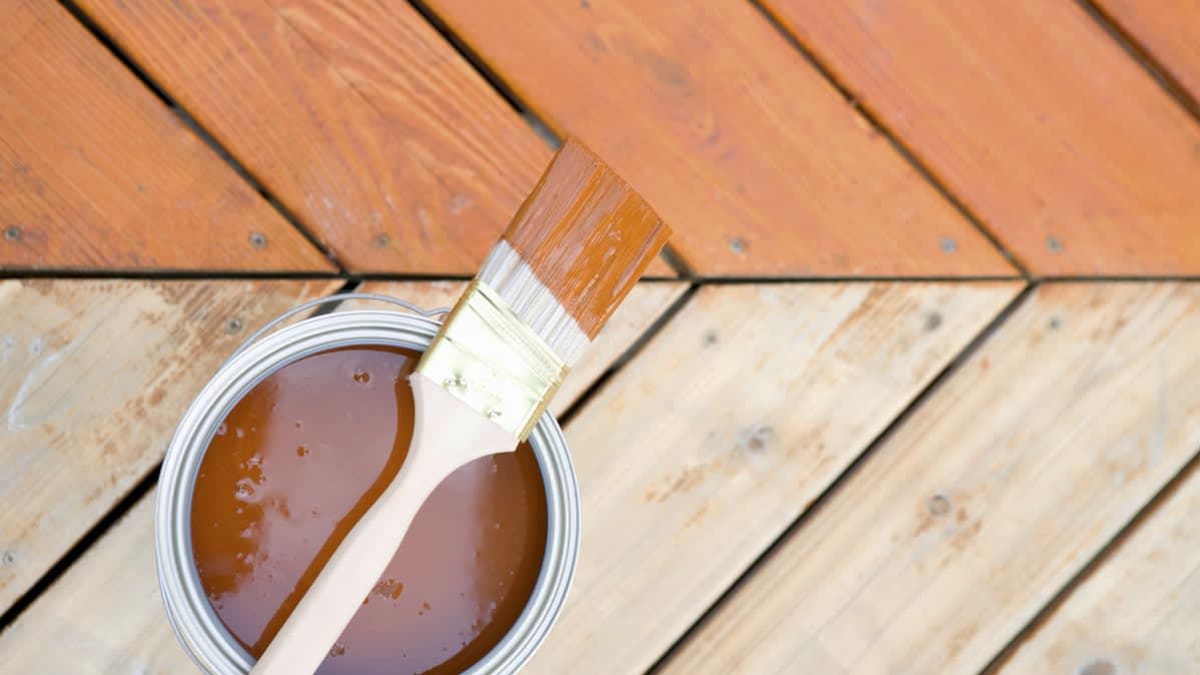
These extra steps, taken before you even open the can, will help make your stain go on more easily and help ensure a frustration-free experience and seamless results.
Sand the wood, starting with coarse-grit sandpaper. You can use a belt or orbiting sander, but renting a drum sander may be more effective for very large decks. Smoothing out any blemishes, splinters, or splits will help ensure an even application.
If your wood deck, fence, or furniture was built from pressure-treated lumber made after 2004, you should strap on your safety mask—or N95 mask—to avoid inhaling dust and do the sanding yourself. Start with coarse sandpaper to remove damaged spots, then progress to finer grits to create a smoother surface before staining. Remember to sweep or wipe down the wood surfaces once you’re done. Use a putty knife to clean between deck boards.
If you’re staining wood made from pressure-treated lumber before 2004, consider hiring a professional to sand the surfaces. That’s because the wood may contain chromated copper arsenate, a chemical that releases toxic arsenic into the air and the surrounding soil.
Make sure the surfaces are clean. If you have an old, unstained deck or one where the stain has worn off, use a deck cleaner, scrub brush, and pressure washer to clean it at least a day before you plan to apply the stain. Let the wood dry for as long as directed by the instructions on your can of wood stain. For newly built wood structures that don’t require cleaning, simply wait six to eight weeks after installation for the wood to fully dry before applying stain.
Read the instructions on the can carefully. This will tell you how much coverage you can expect from a single can, and whether you’ll need more at the ready. It will also inform you of the required drying time for the product. This can vary by stain type and manufacturer.
Protect the surroundings. Water any plants and shrubs near the project and cover them with plastic sheeting. It will protect them from overspray or runoff, and watering beforehand will help keep their roots from soaking up any spilled stain.
Protect yourself. “Use a combination of chemical-resistant gloves, aprons, and even a face shield to prevent stain from getting on your skin,” says Bruce Brod, MD, a clinical professor of dermatology at the University of Pennsylvania Perelman School of Medicine.









